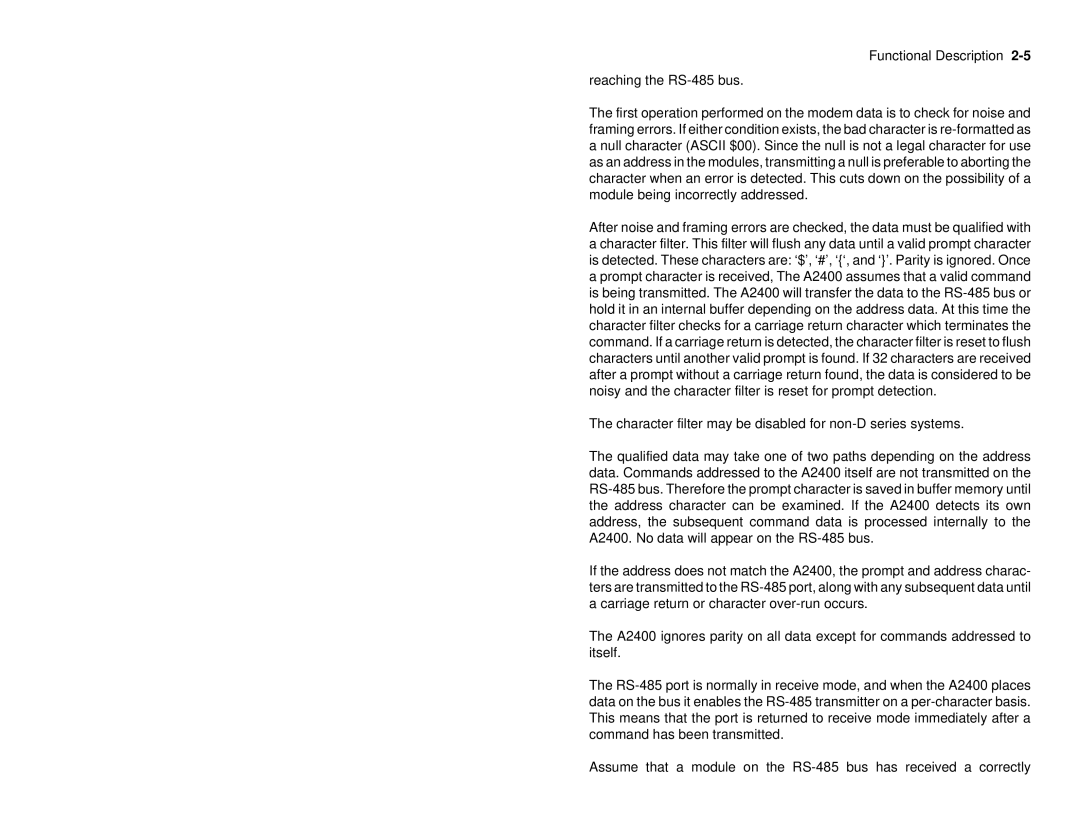Functional Description 2-5
reaching the RS-485 bus.
The first operation performed on the modem data is to check for noise and framing errors. If either condition exists, the bad character is re-formatted as a null character (ASCII $00). Since the null is not a legal character for use as an address in the modules, transmitting a null is preferable to aborting the character when an error is detected. This cuts down on the possibility of a module being incorrectly addressed.
After noise and framing errors are checked, the data must be qualified with a character filter. This filter will flush any data until a valid prompt character is detected. These characters are: ‘$’, ‘#’, ‘{‘, and ‘}’. Parity is ignored. Once a prompt character is received, The A2400 assumes that a valid command is being transmitted. The A2400 will transfer the data to the RS-485 bus or hold it in an internal buffer depending on the address data. At this time the character filter checks for a carriage return character which terminates the command. If a carriage return is detected, the character filter is reset to flush characters until another valid prompt is found. If 32 characters are received after a prompt without a carriage return found, the data is considered to be noisy and the character filter is reset for prompt detection.
The character filter may be disabled for non-D series systems.
The qualified data may take one of two paths depending on the address data. Commands addressed to the A2400 itself are not transmitted on the RS-485 bus. Therefore the prompt character is saved in buffer memory until the address character can be examined. If the A2400 detects its own address, the subsequent command data is processed internally to the A2400. No data will appear on the RS-485 bus.
If the address does not match the A2400, the prompt and address charac- ters are transmitted to the RS-485 port, along with any subsequent data until a carriage return or character over-run occurs.
The A2400 ignores parity on all data except for commands addressed to itself.
The RS-485 port is normally in receive mode, and when the A2400 places data on the bus it enables the RS-485 transmitter on a per-character basis. This means that the port is returned to receive mode immediately after a command has been transmitted.
Assume that a module on the RS-485 bus has received a correctly
